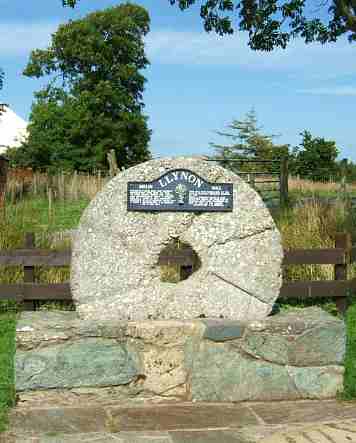|
Llynnon Mill, Llanddeusant, Anglesey
Click here to add YOUR Story about an Anglesey Windmill See what other visitors have written about windmills in Wales
Situated just on the outskirts of the village of Llanddeusant, this windmill is a fine, living example of local industrial archaeology.
Windmill facts:
Nearby, you can also follow the Mills Trail. Pick up a guide map from the mill or tea room. Just follow the signs from Llynnon Mill and pass the car park. On your way, about 200 metres from the windmill, you will see the ruins of the local bakery. At one time this site would have been pivotal, linking the flour produced at the mill with the needs of the local community. You will enter the quiet village of Llanddeusant and will find the path to the fields a little obscure, as it runs past a private property and is hidden by dense tree coverage. This makes it all the more exciting! Having negotiated some styles and crossed open farmland, you will eventually approach the sole surviving watermill on the island. Howells Mill (or Felin Selar as it is known by locals) was renovated in the mid-1850's, though records suggest there has been a mill here for over 600 years. This watermill has three huge pairs of grinding stones. Water is diverted from the River Alaw down the mill race and this powers the wheel.
Though Llynnon Mill still functions, and produces flour, it is to all intents and purposes yesterday's industry. Interestingly, just a few miles away on some high ground is another technology which also uses the elements as its energy source.
The Llyn Alaw Wind Farm, one of three on Anglesey, is made up of 33 huge turbines.
Built in 1997, this wind farm contributes to the total output which by some estimates can meet up to 70% of the island's needs.
How interesting that one form of energy is the source of power for two different technologies, designed centuries apart for two significant purposes.
What Other Visitors Have SaidClick below to see contributions from other visitors to this page...
LLynnon Mill Flour Hits China
Llynnon Mill Wholemeal Bread Recipe Not rated yet Return to Anglesey Attractions
|

















